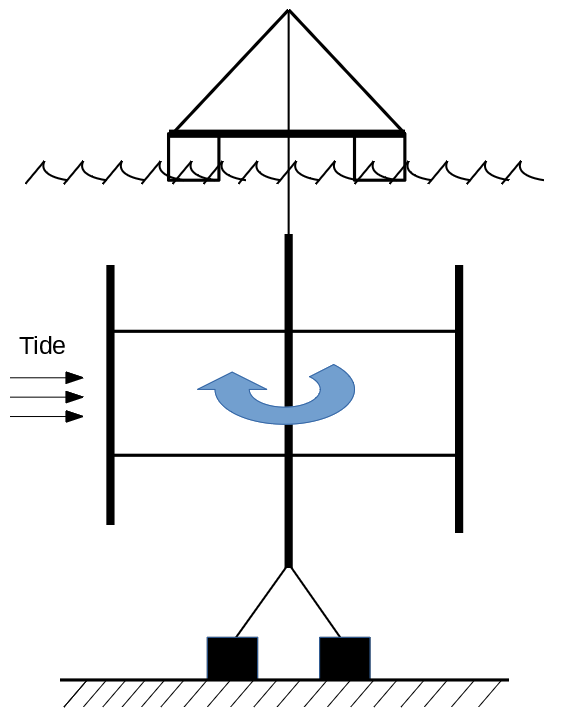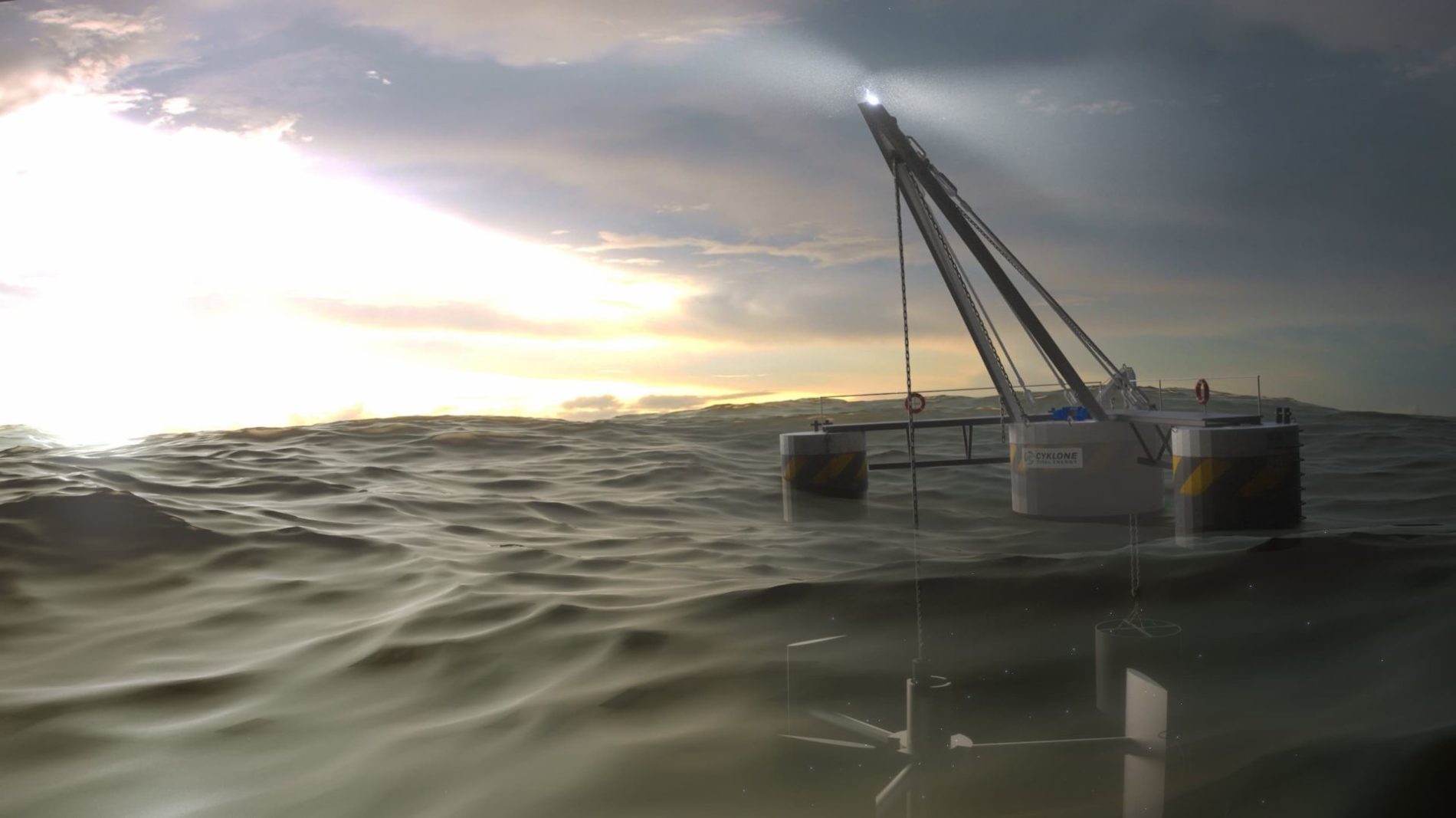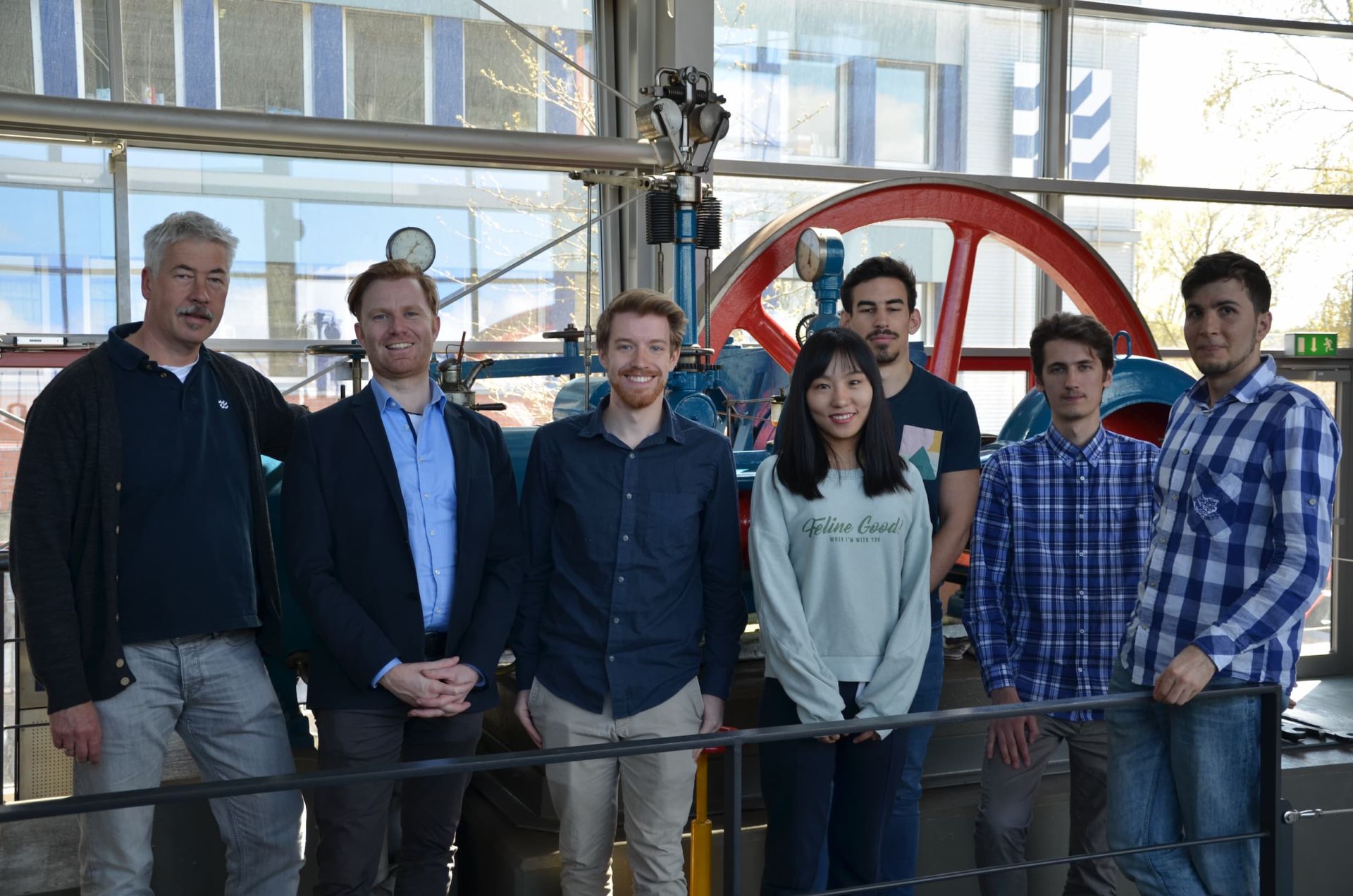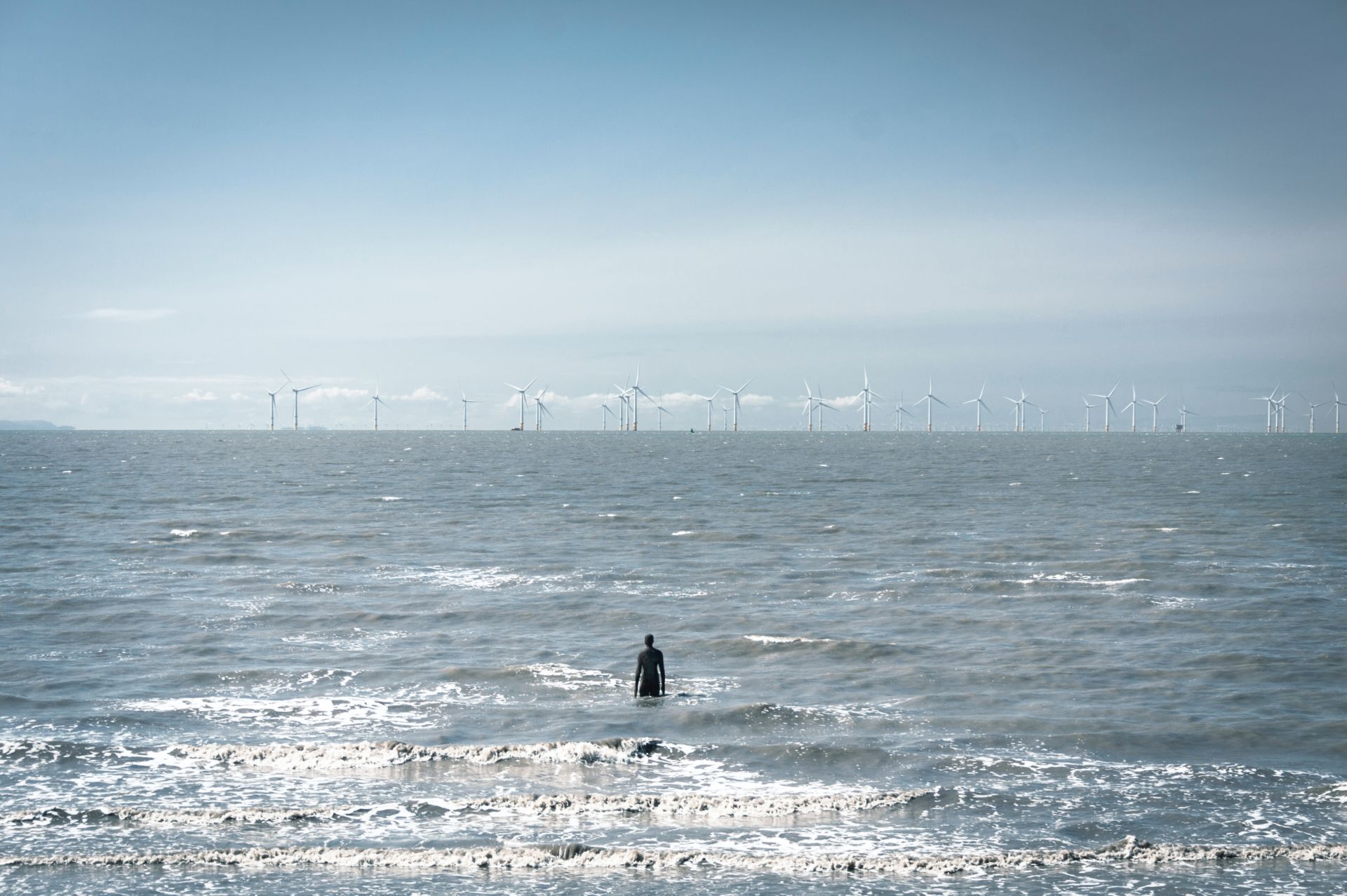We’re in 2021 and three-quarters of our energy is still coming from fossil fuels. Only 16% is coming from low-carbon sources, from which 11.4% are renewable (wind, solar, water), and 4.3% nuclear. We still have a long way to go before fully committing to renewable energy on a wide scale across the world, and this is where Cyklone Tidal Energy comes in.
Cyklone Tidal Energy is a start-up company that could be leading the way towards accelerating the process of getting rid of fossil fuels through its innovative concept of free-stream tidal turbines.
The Problem With Off-shore Wind
While the implementation of renewable energy sources has been increasing, it’s still going too slow: hydropower accounts for 6.4%, wind for 2.2%, and solar for 1.1% of global renewable energy. Hydropower plants might seem promising because of their capacity to generate large amounts of electricity (16% in 2017), but their use is very contested and new projects to implement hydropower plants meet strong resistance as the reduced downstream water flow and flood risk can destroy wildlife habitats, as well as the surrounding land.
On the other hand, the challenge to scale up the implementation of wind and solar farms has to do a lot with the question of space. For wind energy, a solution for the spatial question has been found through off-shore wind turbines, which are installed in the open ocean, where the winds are much stronger – but there is a huge problem that is barely being talked about: the deterioration of rotor blades.
Volker Osterlitz, the founder of Cyklone Tidal Energy, explained to me that “the deterioration happens because the spraying waves leave salt crystals in the air which then reach the blades – it’s like you’re sandblasting the turbine with salt.
The “sandblasting” from the salt removes the paint from the blades, therefore only leaving the fiberglass on the blades, but it’s the most expensive piece which is gone in just three to six years. If the blades were made out of different materials like steel or aluminum it wouldn’t be so much of a problem but there’s not really an engineering solution to use different materials on such big off-shore wind turbines. You basically have to stick to the fiber materials, but the fiber materials simply don’t work there. “
So, why is it so important to know about the deterioration of off-shore wind turbines?
“The biggest problem is that there’s much of decarbonization at stake: everything that isn’t solar, or wind energy on-shore, or experimental concepts, is placed on the stake of off-shore wind turbines … is placed on this bet that is clearly failing. It’s a massive problem on the current roadmap we’re projecting towards 2030/2050.”
Volker took it to heart that there are investments of millions going into the production of off-shore wind turbines, meanwhile, their early deterioration is throwing a lot of precious money and time into the bin – money and time that could have been used to come up with, or support, much more efficient alternatives.
An Efficient Solution
With his concept of Cyklone Tidal Energy turbines, Volker came up with a more efficient, cost-saving, and easier-to-implement alternative. Only that these turbines are much smaller than off-shore wind turbines, and would be floating close to the shore, held in place by an anchor.

He came up with his idea back when he was still pursuing his studies. “Through my experience doing Olympic sailing on a lake back when I was still at university, I got the idea that you could build a super large wind turbine using the mechanics behind a sailing boat going around in circles. Jean-Marie Darrieus already patented this idea (the vertical axis turbine) in 1910, so building a wind turbine like a sailing boat is a very old but logical concept.” A concept whose potential has been recognized by many scientists in the field of tidal energy, and which has been worked on for a long time – but Volker is the first one to add experimentally proven control mechanics to the design, helping the turbine to significantly better exploit the pattern of changes in flow speed.
So, how can more energy be generated with tidal turbines that are generally smaller than wind turbines? Simply put, the kinetic energy of water is a thousand times greater than the kinetic energy of wind. “It’s like the difference between a storm and a tsunami – the destructive force within a water mass is much bigger than in an air mass. It’s positive energy, so to say, something that we can use for renewable energy.”
Volker and his partner Christian Kemper, who is the Managing Director of GFC (Green Finance Corp), expect the Cyklone Tidal Energy turbines to be able to convert this immense kinetic energy into renewable energy that could be sold for one Euro cent per kWh – much cheaper than Diesel, which is sold at eight cents per kWh.
This would be possible through the installation of multiple tidal turbines along the coastline. At tidal highs and lows, which occur four times a day, there is a gap of one hour in which the turbines are not being operative. However, once multiple farms are linked, the energy generated would be constant and non-intermittent. Even when their speed goes down, the turbines can adapt to the slower movement and still generate energy.
Another innovative aspect is that because these turbines are floating, they’re easy to scale up. Christian pointed out that “you can start with one to have a demonstrator and once that brings you money, you can make it bigger because it’s very easy to scale technology, upwards and downwards – you don’t need land, you don’t need anyone’s permission, because it’s floating and water is everywhere.”

Wind turbines cannot compete with the efficiency of tidal turbines because of the simple fact that, even though wind turbines are built to operate at a wide range of speeds, the wind isn’t circulating strong enough 24/7. So, unlike wind, tidal currents are totally predictable. If a turbine for 2 m/s is technically made available, Volker and his team estimate that the German North Sea alone could provide 4% of the world’s primary energy demand (fossil energy) from the tidal streams. Europe could also access places in the Atlantic coastline or the Mediterranean that have higher tidal currents than the minimum requirement for profitable extraction (2 m/s).
IRENA, one of the presently most trusted sources in renewable (and therefore also tidal) energy research, states that “worldwide, the tidal resources are considerable and also largely unmapped. However, global resources are estimated at 3 TW. The technically harvestable part of this resource, in areas close to the coast, is estimated by several sources at 1 TW”.
Because of their immense efficiency potential, tidal energy could literally replace the energy coming from fossil fuels – and together with other renewables such as wind, solar, and hydropower energy, meet the world’s energy demand. However, before this can happen, humans need to conduct much more extensive studies (e.g. through satellite scanning) on tidal shelf areas, to find out their true potential for energy generation.
What About Sea-life?
Possible environmental concerns might raise the question of how it is possible to operate these tidal turbines without disturbing life in the ocean. Volker had a very surprising answer for this: “Studies from competitors’ projects found that sea life is much better equipped to evade the turbines. Unlike birds, fish do actually sense the pressure difference ahead of the turbines. Fish can use water pressure as a sensor and therefore notice a turbine; the same thing goes for sea mammals. And for life at the bottom of the sea, it’s actually positive because the turbines put more air in the water, therefore nutrition raises. It also serves as an artificial reef in the sense that shells, crabs, and other life can nest in the structure, so it becomes something like a small reef with better nutrition building. It’s totally fascinating what’s happening in these studies. These studies have been conducted on behalf of these research projects by independent institutions, but there will be further reviews on the more these turbines are going to be used. But the first studies are really positive about this to the point that it looks like we won’t even have to place nets around these turbines.”
What The Future Of Cyklone Tidal Energy Depends On
With the help of a really engaged team of young engineers from all over the world, who at that time were doing a master’s international exchange program at the University of Applied Sciences in Kiel, Volker and Christian could bring the technology forward to where it is today. “They were all really engaged in our project. If we had the money from an investor, we would have already had 10-12 top-qualified engineers working for us and the speed of the project would be way faster.”

To move forward, needed funding would finance a full-time working team as well as build a prototype that can serve as a real-life model for potential clients. “We have already requested money from the government of Luxembourg, we have a job for the city of Lübeck which is the largest German Baltic Seaport, we have money from the state of Schleswig Holstein to start measuring currents and find the right sites. Public money is doing the feasibility studies, but to put steel in the water, you need an entrepreneur investor, you need someone who has already invested.”
Christian and Volker have a clear vision and are looking for an investor who is really keen to implement their technology as soon as possible and who would even be interested in making use of the renewable energy themselves, something like a container logistics company like Maersk who is planning to operate a carbon-neutral vessel by 2023. Christian pointed out that the energy from their turbines could even be used for a small project like the Alster fountain in Hamburg, or the Aquaretum in Zürich, providing them with 100% renewable electricity coming from the closest river runoff turbine.
There’s currently a lot of investment and land-grabbing happening for off-shore wind energy – a technology that, for reasons I mentioned in the beginning, does not seem to have any future prospects. Cyclone’s tidal turbines are not competing for the same patch of land as off-shore wind turbines – they would be installed much closer to the shore. But there’s a higher chance for Cyklone’s tidal turbines to make much more profit out of the time and investment going into the off-shore wind.
“You don’t need the tower construction, specialty cranes, and ships to set it up, so you have much less investment capital. We have fewer maintenance costs. The profit is higher because of the density of the water – we have a 30% more efficient turbine already by our unique design. So we have a turbine that is cheaper, more efficient and needs less maintenance. Plus it’s a payback in just 3 years. It’s a much less risky investment, and we get away with an energy price of just one Euro cent. That’s why I say it’s a game-changer. If you can make this happen, it’s a price that fossil fuels cannot compete with anymore.”
Editor’s Note: The opinions expressed here by Impakter.com columnists are their own, not those of Impakter.com. — Featured Photo Credit: Craig Cooper via unsplash.com










